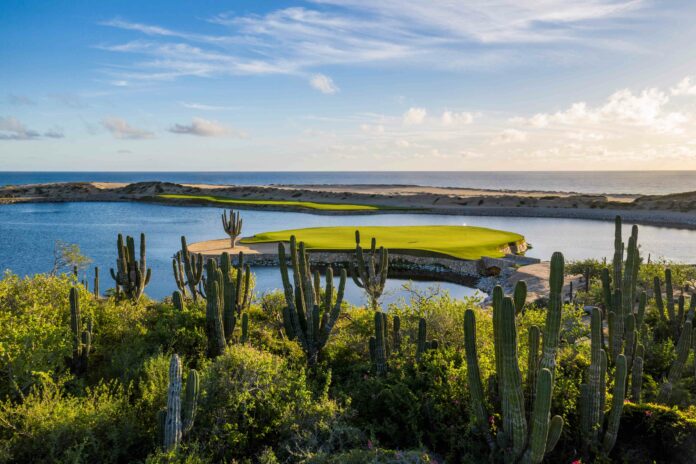The name has changed, but the beauty and challenges of Greg Norman’s seaside Cabo course are untouched
By Dave McKibben
As I played the first few holes of the Solmar Golf Links in Cabo San Lucas, I was awed by its beauty. The shoulder-high windswept sand dunes surrounding lush, pristine fairways are something you don’t see every day, even in Los Cabos. Adding to the jaw-dropping scenery, the aqua blue Pacific Ocean is so close, it looks like you’re hitting directly into it on every shot. But as I stood over my ball in the fairway on No. 2, I began to wonder if this stiff sea breeze was ever going to let up. I was hitting an extra two clubs on every shot.
“Don’t worry, there are lot of holes with the wind at your back on the front and the back,” said Jose Marcellan, Solmar’s head pro and my playing partner. “It’s a challenging course, but it’s fair. It’ll even out. You’ll see.”
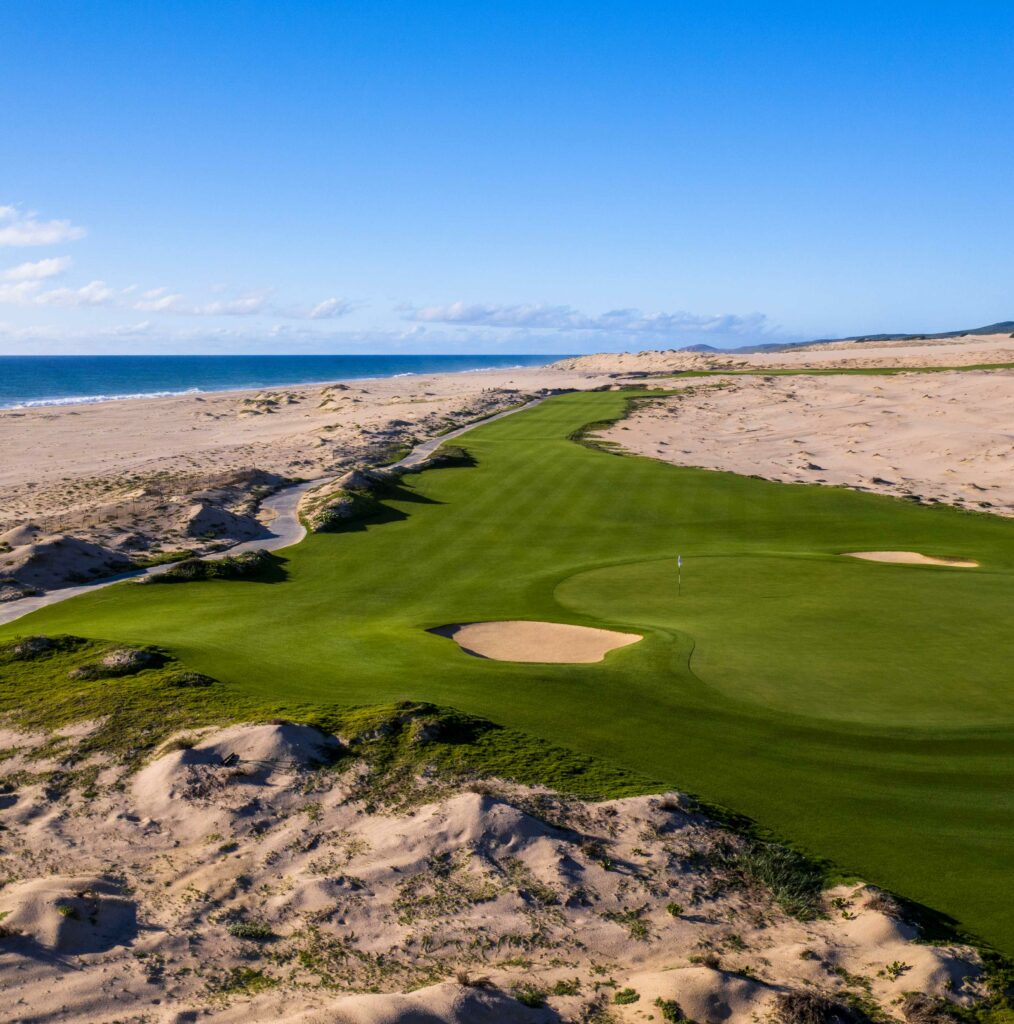
Sure enough, the wind was at my back on the par-3 third hole. We played from the blues, so my distance was 205 yards. I hit just a 7-iron and launched it next to the green with a 25-mile an hour following breeze. With an easy two-putt, I had my first par of the day.
Sol and Mar merge the Spanish words Sol (sun) and Mar (sea), so it stands to reason that the Pacific Ocean would be visible from every hole on this 7,200-yard Greg Norman-designed masterpiece. The course debuted in early 2020, then changed its name in 2022 from Rancho San Lucas to Solmar Golf Links to maintain branding consistency with the surrounding Solmar hotels.
The course spans three ecosystems: hugging shoulder high windswept dunes, weaving through a thick cactus forest on the front nine before coming back to the beach and the dunes on the finishing nine. The course also includes two full-service comfort stations where snacks and beverages are included in greens fees.
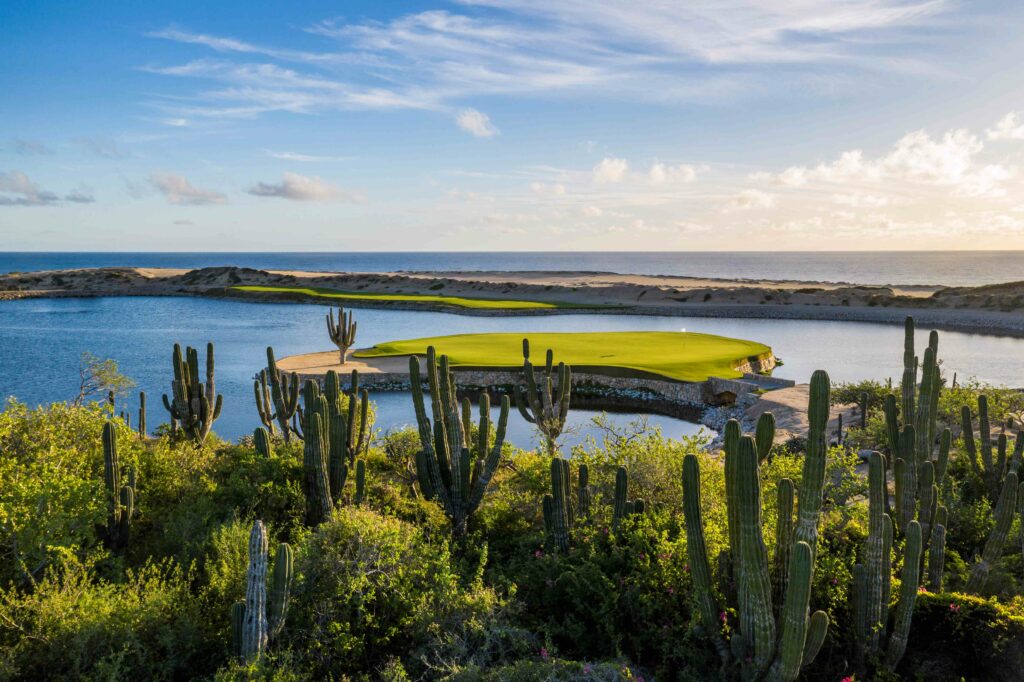
The par-3 17th hole is the only island green in golf-rich Cabo. For me, it played like the 17th hole at TPC at Sawgrass –I dumped three balls in the water!
Minus the 17th hole, Solmar is more playable than most Cabo resort courses with five sets of tees, wide landing areas, a limited number of fairways bunkers and subtly contoured medium-sized greens.
But there also isn’t any rough, which is problematic if you miss the fairway.
“We’re trying to grow the rough around the greens and the fairways,” Marcellan said. “If you miss a hole just a little, it’s not fair to go straight into the jungle.”
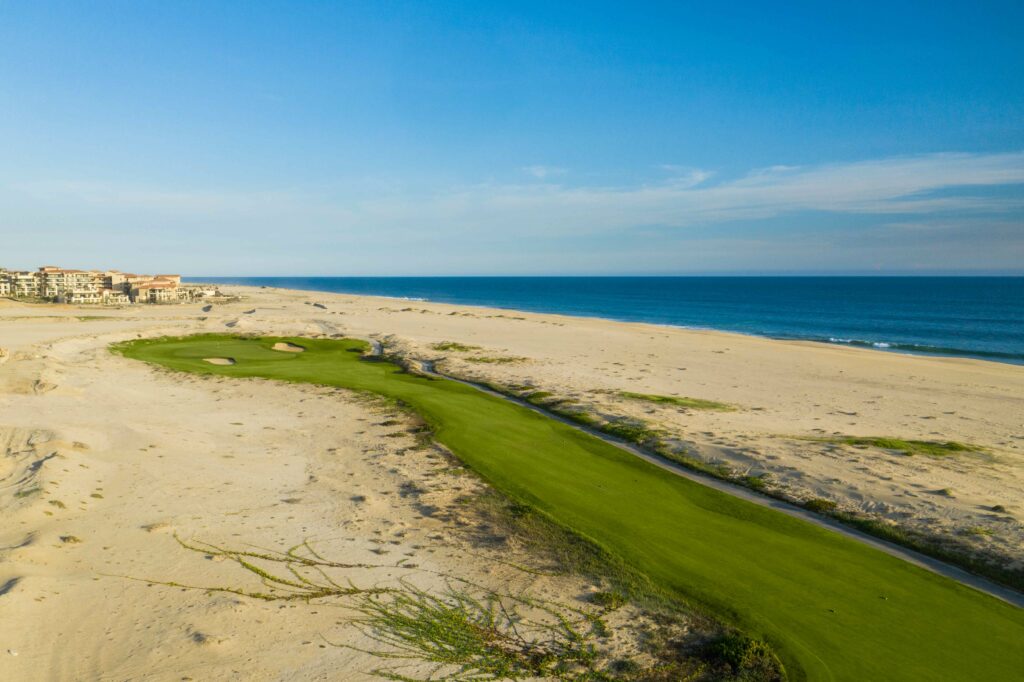
Nubia Sarabia, who was hired earlier this year as Solmar Golf Links’ Director of Golf, said more changes are being planned at Solmar beyond defining the fairways better.
“We are in the process of creating a golf culture here,” she said.
Nubia realizes she’s already working with an amazing piece of land, so there won’t be any major changes. Solmar is ranked 16th on the list of best golf courses in Mexico and the Caribbean by Golfweek. Last year, Golf Digest named it one of the top three Golf Resorts in Mexico. Solmar is also the only Mexican golf course to receive an Audubon International certificate for protecting the environment.
“This is a unique golf product in this part of the world,” Nubia said. “It emulates what the purists love, a links course in the best way possible, undisturbed. What land was here is what was used by Greg Norman. The wind works in our favor, and then certain times of the year against us. The opportunity for a golfer to enjoy a golf links experience in the Pacific of Mexico is special.”
The first time Brian Nixon played Solmar it reminded him of another Norman-designed links course – Doonbeg in Ireland.
“Minus the rain and the cold, Solmar and Doonbeg could basically be sister courses,” said Nixon, a scratch golfer who owns a vacation rental company in Cabo and lives in Savannah, Georgia. “They both have generous fairways with a lot of undulation, which can give you tricky lies, and both courses have a lot of wind to deal with. They are basically different courses every day depending on how the wind blows. To have a links golf course in Cabo is just such a wild thing.”
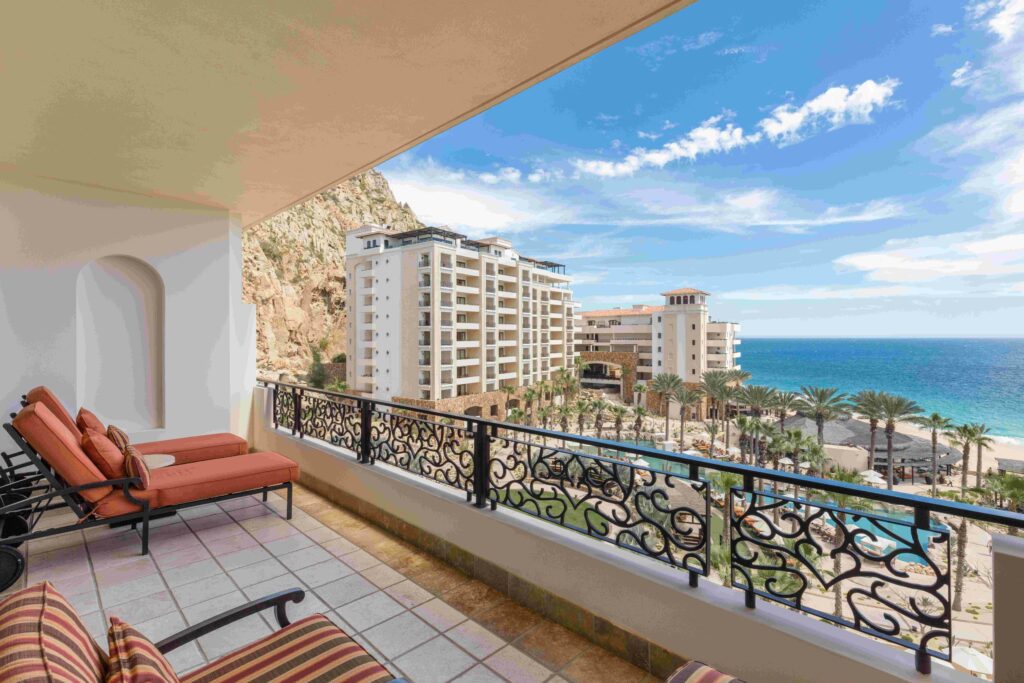
Solmar Golf Links is also one of the few courses in Cabo that’s not semi-private, meaning it’s not necessary to stay at the resort to play it. But for those who’d rather stay and play, there are plenty of options. The 145-room Grand Solmar Pacific Dunes Golf and Spa, located just north of Cabo San Lucas and minutes from the course, comes with startling Pacific Ocean views, two gourmet dining spots and a deli, multiple pools, a seawater lagoon with kayaking and paddle boarding, two water slides, pickleball courts and a seaside spa.
Three-night stay and play packages in Pacific Dunes’ grand studios for two golfers are $577 per night. The packages include two days of unlimited golf, free Wi-Fi and free parking. The studio suites offer ocean views, a king bed and a queen murphy bed for up to three guests.
Three-night stay and play packages for two golfers in a grand master suite for up to four guests run $676 per night. Grand master-suites include a bedroom and two bathrooms, a dining room and living room, marble floors and private balconies. A stay and play in penthouse suites, perfect for a buddies trip or multi-family golf trip, are $950 a night and come with two spacious bedrooms and three bathrooms for up to eight guests. Golf packages aren’t available yet at two larger resorts 20 minutes from the course–the 258-room Playa Grande and the 246-room Grand Solmar Lands End–but that may change by the end of the year.
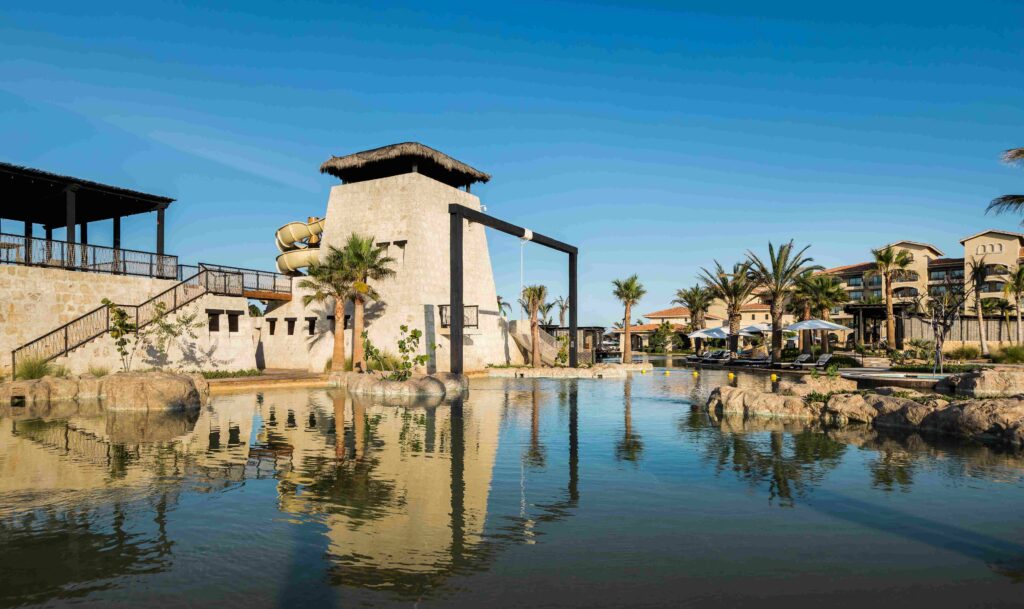
Getting to Los Cabo is easier than ever, especially for Southern Californians who access the Tijuana Airport via the Cross Border Xpress in Otay Mesa, where $23 will take you across the border, through customs and airport security in 15 minutes. Street parking, reserved and valet parking are available at CBX, which has had over 22 million passengers since opening eight years ago. Round trips for the two-hour flight from Tijuana to Cabo start at just $250 on Volaris Airlines. Upon returning to Tijuana, I made it off the plane, across CBX’s pedestrian bridge and into our car on the U.S. side in under 15 minutes.

